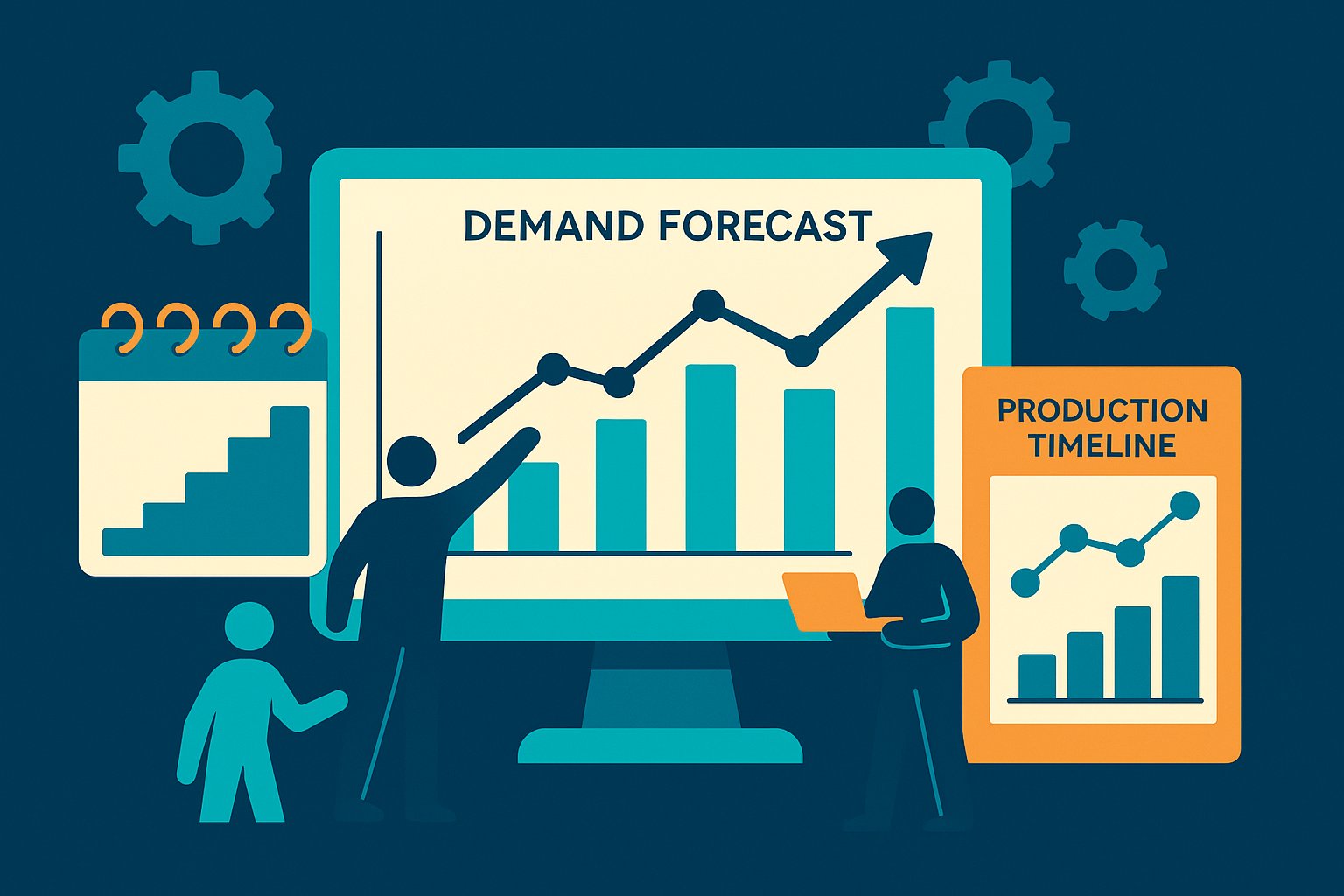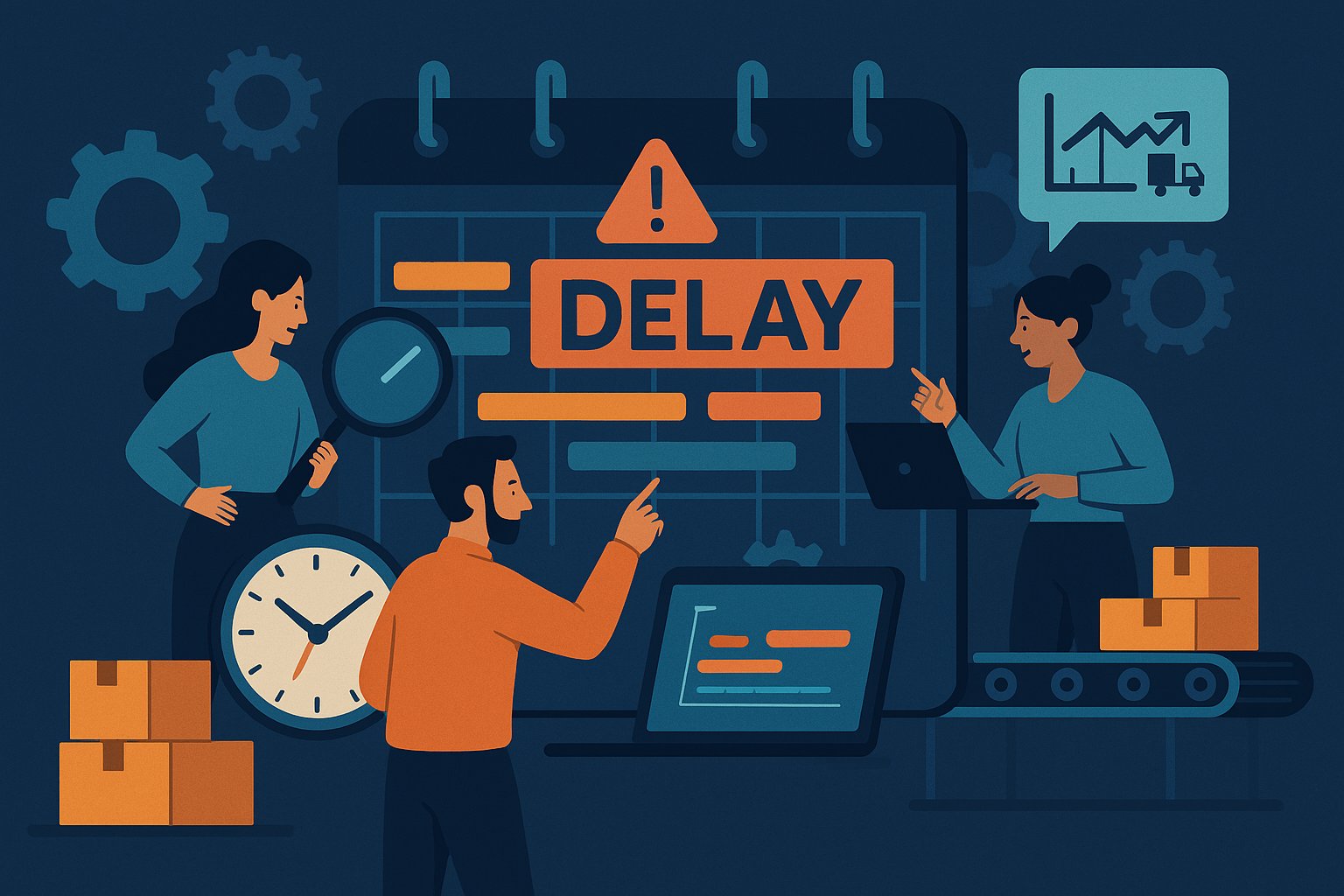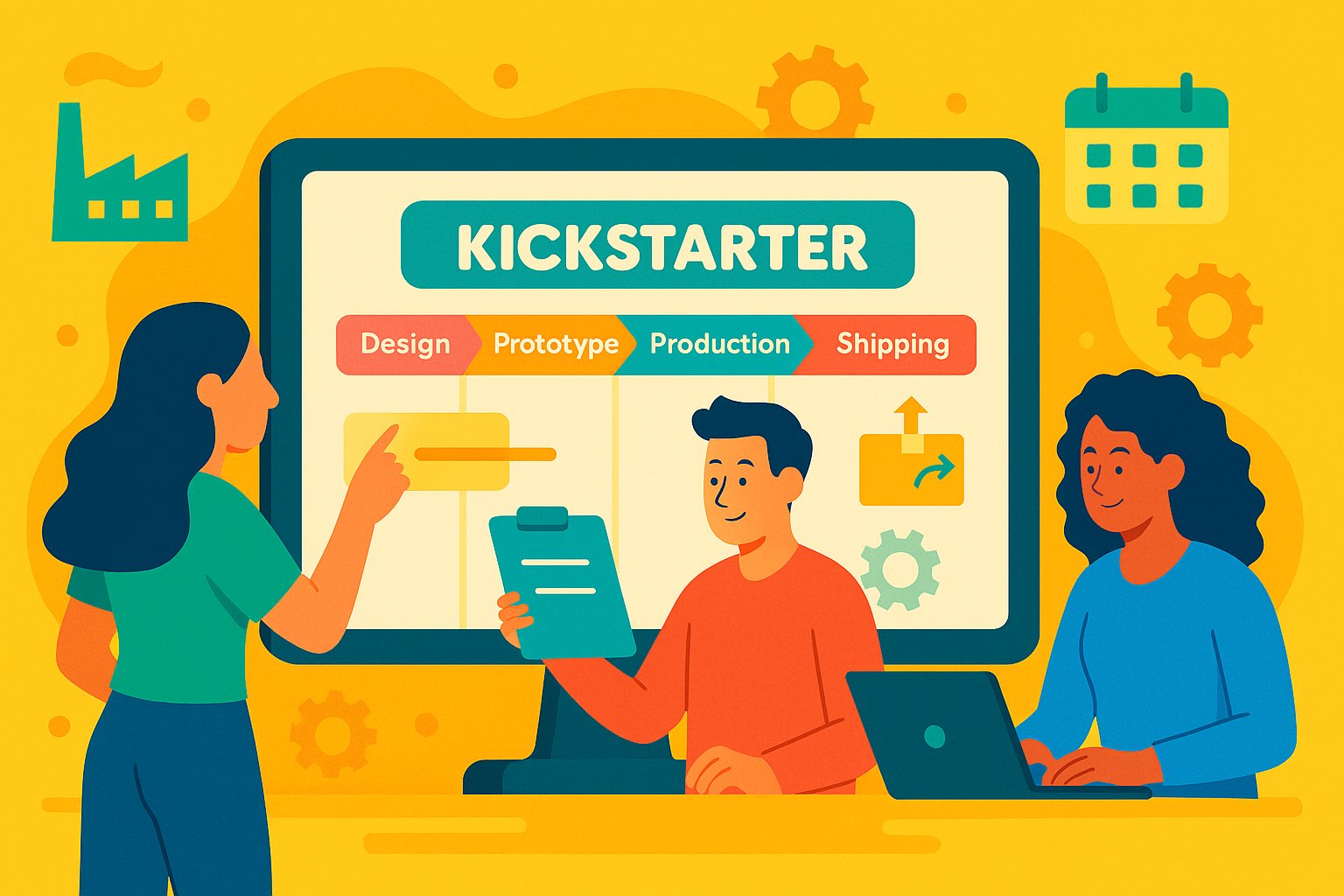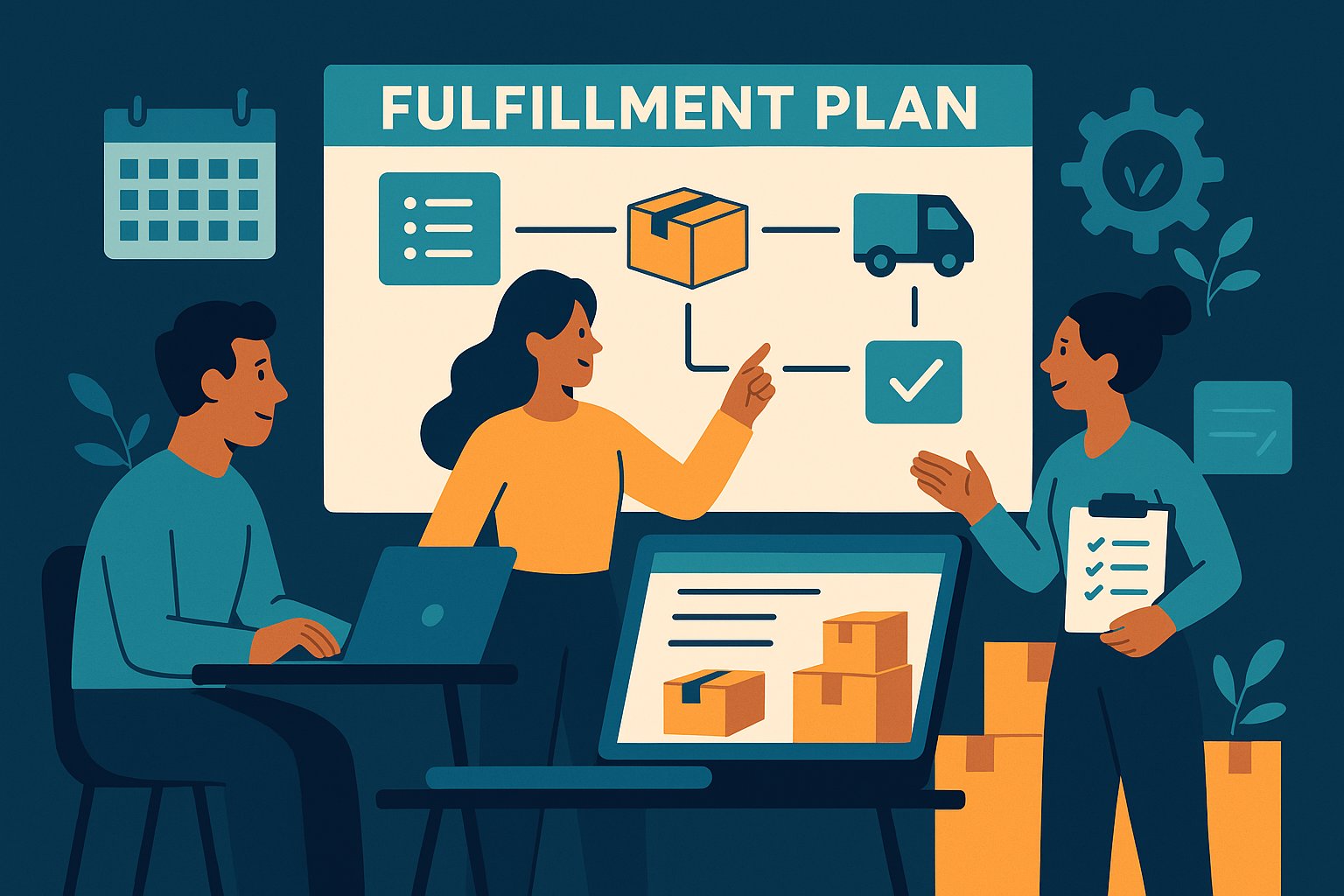Plotting the Path: The Importance of Demand Forecasting in Product Development
Every creator dreams of a successful launch—one where backers eagerly embrace a new gadget, accessory, or design, driving an enthusiastic rush of orders. Yet, that dream can quickly become a nightmare if production can’t keep pace. Forecasting demand and scaling your production timeline isn’t just about printing spreadsheets; it’s about reading the pulse of your market, detecting subtle signals in pre-orders, and building a flexible framework that grows with your project. By nailing demand projections upfront, you avoid costly stockouts, minimize excess inventory, and cultivate a reputation for reliability that keeps supporters coming back. In this guide, we dive deep into strategies and practical steps for accurately predicting demand and aligning your production plan so you can ride the wave of success rather than get swept under it.
Reading the Pulse: Interpreting Market Signals Before Launch
Before your project goes live, you already have a treasure trove of data at your fingertips—emails, social media interactions, newsletter signups, and even casual conversations with friends and family. These interactions can reveal more than mere enthusiasm; they highlight potential pain points, desired features, and the scale of interest. Start by segmenting your audience: who are hardcore enthusiasts most likely to back day one, versus casual observers who may decide at the last minute? Track email click-through rates on pre-launch teasers, monitor shares and comments on prototype images, and gauge responses to early surveys. Even a modest email list of one hundred subscribers can yield valuable insights: if 30 percent indicate they’d pledge at a $50 tier, you’ve uncovered an early baseline for demand. As you refine your messaging and reveal additional product details, watch for spikes in engagement—significant upticks suggest resonant value propositions, while flat lines may signal a need to adjust your features or price points. By interpreting these market signals as directional indicators, you begin sculpting a preliminary forecast that transcends guesswork.
Harnessing Pre-Orders and Early Commitments for Precision
Pre-orders are more than a revenue stream—they’re a powerful barometer of genuine demand. If you can integrate a pre-order mechanism before your official campaign, you gain the ability to quantify backer intent in real time. Create a simple landing page offering limited early-access pricing or bundled perks that incentivize commitments. Even if only a fraction of your eventual backer base converts, you’ve unlocked a valuable datapoint: the actual number of people willing to pull out their credit card before the product is fully realized. Combine this data with email signups or wishlist entries to create a weighted score that translates pre-launch engagement into a conservative, moderate, and aggressive demand forecast. Layer in discounting impact—early adopters may take advantage of a 10 percent pre-order discount, but their behavior can still extrapolate to full-price tiers. By using pre-orders as a foundation, you transform abstract interest into practical production targets, enabling you to negotiate minimum order quantities (MOQs) with suppliers more confidently.
Modeling Variability: Building Scenarios for Best Case, Base Case, and Worst Case
Even the best forecasts can veer off course when confronted with unpredictable realities: a viral influencer endorsement, a sudden market downturn, or a competitor’s surprise announcement. To guard against these shocks, construct at least three demand scenarios—best case, base case, and worst case—each tied to specific assumptions. In the best-case scenario, assume a highly successful marketing push—social media coverage, glowing press reviews, or a well-timed feature in a popular blog. Project a 25 to 30 percent increase over your initial pre-order numbers. In the base case, adopt a conservative stance where pre-orders track at 80 percent of your early forecast. In the worst case, factor in potential hiccups: delays in prototype demos or muted social engagement, translating to only 50 percent of your pre-order baseline. By modeling production requirements for each scenario, you create a decision matrix that guides vendor negotiations, contingency buffer sizes, and budget allocations. When circumstances shift—say, a demo video goes viral—the relevant scenario flicks into place, enabling rapid adjustments rather than panicked reworks.
Crafting a Flexible Production Blueprint: Modular Runs and Batch Strategies
Once you have a sense of likely demand, the temptation is to lock into a single production run. However, committing all resources to a one-shot “mass produce” mentality can backfire if demand overshoots or undershoots your projections. Instead, architect a modular production blueprint: break your timeline into multiple smaller runs, each triggered by specific thresholds. For example, if you initially forecast 2,000 units, plan an initial pilot run of 500 units to test quality and gauge early fulfillment metrics. Schedule a second run of 1,000 units once 60 percent of the pilot batch is spoken for. Reserve the final 500 units for a post-launch period, adjusting specifications based on backer feedback. This batch-based approach achieves two goals: it limits risk—since you’re not exposing all inventory at once—and it provides learning loops. After each batch, analyze quality control results, assembly time, and shipping costs. If a design tweak or packaging optimization emerges, you can implement it in the next run rather than retrofitting thousands of units. By weaving flexibility into your production timeline, you transform rigidity into adaptability.
Aligning Sales and Marketing: Synchronizing Campaign Peaks with Production Readiness
Forecasting demand isn’t solely a manufacturing exercise; it’s a collaborative dance between sales, marketing, and operations. When planning your promotional calendar—social media blasts, influencer partnerships, or paid ad campaigns—coordinate closely with your suppliers’ capacity to handle sudden surges. If a well-known YouTuber schedules an unboxing video for launch day, you need to ensure that your second production run is already in the pipeline to fulfill the expected bump in orders. Conversely, if your supplier’s factory undergoes seasonal maintenance in mid-August, avoid scheduling crowdfunding pushes and marketing events that could ignite a backlog. Create a shared calendar that maps promotional milestones to production milestones: prototype completion, tooling deadlines, pilot run, first batch completion, and so forth. This synchronization reduces the risk of “demand spikes with no supply” scenarios and fosters seamless collaboration between teams, maximizing the impact of every promotional dollar.
Negotiating with Suppliers: Embedding Scalability into Vendor Agreements
A strong partnership with your manufacturing partner can make the difference between a limp launch and a full-blown success. When negotiating with suppliers, don’t merely focus on unit costs; prioritize scalability clauses that let you ramp production up or down with minimal financial penalties. Structure your contract to include volume tiers—if you hit 3,000 units, the per-unit tool amortization drops by 15 percent, but if you only produce 1,000 units, you still maintain the same base price. Include “option-to-produce” windows that lock in MOQs at predetermined price points for each potential production wave. This way, if your demand forecast suddenly spikes, you can activate the next tier without renegotiating from scratch. Also, negotiate lead-time guarantees tied to your projections: if you forecast 1,000 units for Phase One, ask your vendor to commit to a two-week turnaround—if they miss that, include a clause for expedited partial shipments at the same cost. These contract provisions align incentives: your supplier knows that hitting their timeline and volume commitments unlocks more business, and you gain the flexibility to recalibrate your production timeline without costly penalties.
Incorporating Buffer Zones: Safeguarding Against Unforeseen Setbacks
Even the most robust forecasts and supplier agreements can’t account for every disruption—raw material shortages, shipping bottlenecks, sudden policy changes, or unexpected social media trends can all clobber your timeline. To safeguard your project, embed buffer zones at each critical phase of production. When your supplier quotes a two-week tooling period, turn it into a three-week block in your schedule. If the expected assembly time is four weeks, plan for five. Similarly, allow extra days for quality inspections, packaging procurement, and shipping label creation. These buffers aren’t simply “dead time”; they are your breathing room to address glitches without panic. If everything goes according to plan, you finish ahead of schedule and can communicate an earlier-shipping surprise to backers—a delightful bonus that builds goodwill. If a tool breakage demands a week-long repair, you can absorb that delay without impacting your promised shipping window. By treating buffer zones as strategic assets rather than “wasted days,” you transform uncertainty into a manageable variable.
Leveraging Data and Analytics: Fine-Tuning Your Forecast Over Time
Forecasting is not a one-and-done exercise; it’s a continuous evolution fueled by real-world data. Once you launch, the data streams multiply—pledge counts, add-on purchases, churn rates, survey feedback, and social engagement metrics. Plug these data points into analytics dashboards that track deviations from your initial forecasts. If, for example, you predicted 60 percent of backers would choose a base model versus 40 percent upgrading to a deluxe version, but actual numbers flip to 50/50, recalibrate your supplier orders for future runs to reduce the risk of a base-model surplus. Likewise, monitor cancellation rates: if 10 percent of backers change their minds in the last week, adjust your projected headcount accordingly. Use tools that visualize trends—spark charts showing daily pledge velocity, heat maps of geographical backer distribution, or cohort analyses that reveal when most backers committed. These insights inform your decision to accelerate Phase Two orders or postpone the final production run. By harnessing analytics, you iterate on your forecast, inching ever closer to an optimal production timeline that mirrors real-time market demand.
Coordinating Logistics: Integrating Shipping and Fulfillment into Your Timeline
Accurate demand forecasting doesn’t stop at the factory gate; it extends all the way through to the backer’s door. When planning production waves, factor in shipping lead times, customs clearance for international orders, and the capacity of your fulfillment partner. If you anticipate shipping 5,000 units to Europe, North America, and Asia, determine how many containers you need per region and lock in freight bookings early—shipping during peak season can add weeks to transit times. Coordinate with your fulfillment center to reserve warehouse slots for each batch, ensuring that mid-production inventory doesn’t clog their docks. If you’re using drop-shipping for certain regions, verify that your order management system seamlessly routes orders based on geography. By embedding logistics considerations into your production timeline, you sidestep last-mile bottlenecks that derail backer satisfaction. A synchronized cadence—production completion, shipping dispatch, and fulfillment start—ensures that every pledge transforms into a gratifying delivery experience.
Cultivating a Continuous Feedback Loop: Learning and Iterating for Future Success
Even as you sprint to meet current demand, start gathering lessons for the next campaign. Host retrospective sessions with your team to dissect each phase—pre-launch forecasting, supplier negotiations, batch releases, and logistical handoffs. Document where your projections overshot or undershot actual demand. Was your pre-order conversion rate more conservative than anticipated, or did a social media shoutout send orders skyrocketing? Did buffer zones prove overly generous, or did an unforeseen hiccup justify the extra time? Create a living repository—a playbook that captures these insights and evolves with each project. As you prepare for your next reward-based venture, refer to past data: how many units did you underforecast last time? Which regions required expanded shipping buffers? By institutionalizing continuous feedback, you transition from occasional forecasting to a sophisticated, data-driven methodology that tightens production timelines, reduces capital tie-up, and cultivates a reputation for on-time, high-quality delivery.
The Art and Science of Balancing Ambition with Realism
Forecasting demand and scaling your production timeline may sound like the domain of spreadsheets and supply chain algorithms, but at its heart, it’s a blend of art and science. It demands creativity to interpret early market signals, discipline to negotiate flexible supplier agreements, and humility to build in buffers for the unexpected. When you merge these elements—pre-order analytics, scenario modeling, modular production runs, synchronized marketing calendars, and logistics integration—you cultivate a resilient engine capable of handling fluctuations without breaking stride. The result? You deliver on your promises, build unshakable trust with your backers, and position your brand for iterative growth. By treating demand forecasting as an ongoing dialogue between your team, your suppliers, and your community, you ensure that every leap of faith from a backer is met with a meticulously planned production roadmap—turning ambitious ideas into tangible successes.




